The verdict: The 2018 Hyundai Elantra GT hatchback is a fun-to-drive, sporty car that can haul your stuff like a small SUV.
Versus the competition: Euro looks and driving manners with Hyundai’s value packaging and top-shelf warranty coverage should put it on any hatchback fan’s list.
As compact car sales decline in favor of small SUVs, Hyundai believes some Americans are ready for a third option: a compact hatchback that hauls like a small SUV but offers the driving fun and economy of a car. Hyundai is doubling up in this niche market for 2018 with a redesign of its Elantra GT hatchback and a new, sportier trim: the GT Sport, with a turbocharged engine and upgraded chassis. The 2017 version was a one-size-fits-all single trim. As before, the 2018 Elantra GT is an Elantra in name, but is actually a U.S.-badged version of Hyundai's global i30 hatchback with different underpinnings than the U.S. Elantra sedan.
The 2018 Elantra GT faces growing competition that now includes six compact hatches: a freshened Volkswagen Golf, plus the Chevrolet Cruze, Honda Civic, Subaru Impreza (redesigned for 2017), Toyota Corolla iM, Ford Focus and Mazda3. Each is distinctive in one way or another; body style is the one common denominator. But having more rivals isn't bad if it helps hatchback cars become less of an oddity.
I went to San Diego to check out the new GT at a launch event hosted by Hyundai (per our ethics policy, Cars.com pays for its own airfare and lodging at such events). While there, I racked up miles in the city, in mountain canyons and in the desert in a base GT (with a full load of options) and in a GT Sport. Our Chicago-based editors also drove a manual GT Sport.
Looks More Golf Than Gaudy
The 2018 Elantra GT was designed in Europe, where hatches thrive and the Golf is a leader. The 2018 Elantra GT is only slightly longer, wider and lower than the 2017, but it looks more so thanks to a Golf-like boxy design that replaces the GT's former curvy look. It's a shape that manages to be practical while still looking sportier than the 2017. The box is more aerodynamic than it looks, too, with a respectable 0.3 coefficient of drag.
The 2018 GT also bears more family resemblance to the Elantra sedan thanks to its horizontal lines and a version of Hyundai's large cascading grille. The grille is flanked by functional air inlets with vertical LED daytime running lights. The headlights stretch up and around the corners into a strong horizontal character line that extends all the way into the taillights and a rear end that looks wider than it is; a standard rear spoiler also lengthens the look of the roofline. Full LED headlights and LED taillights are available on the GT and standard on the GT Sport, as are old-school round chrome exhaust tips.
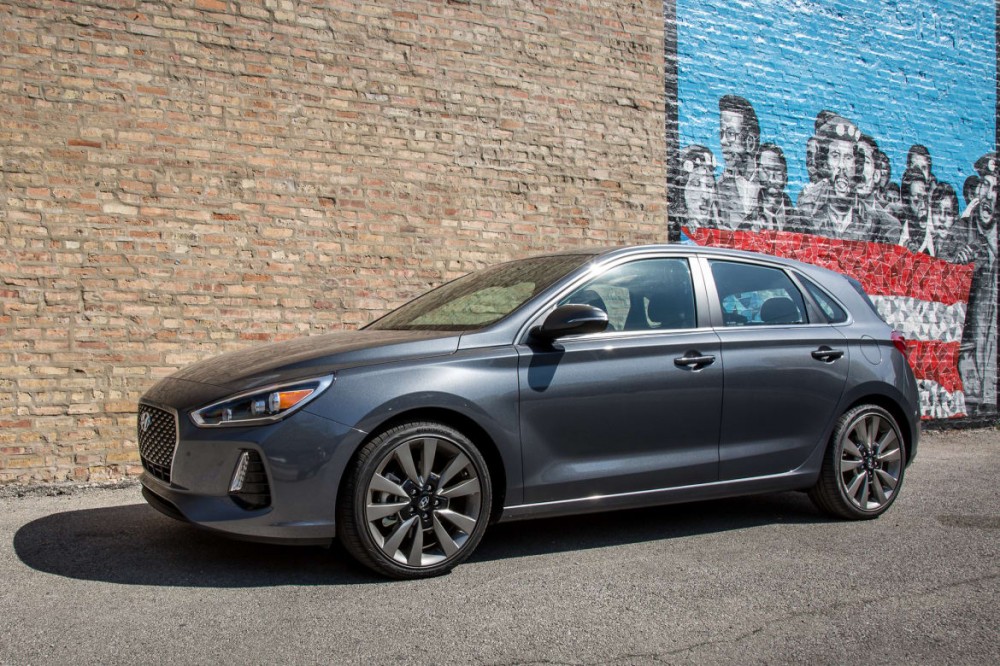
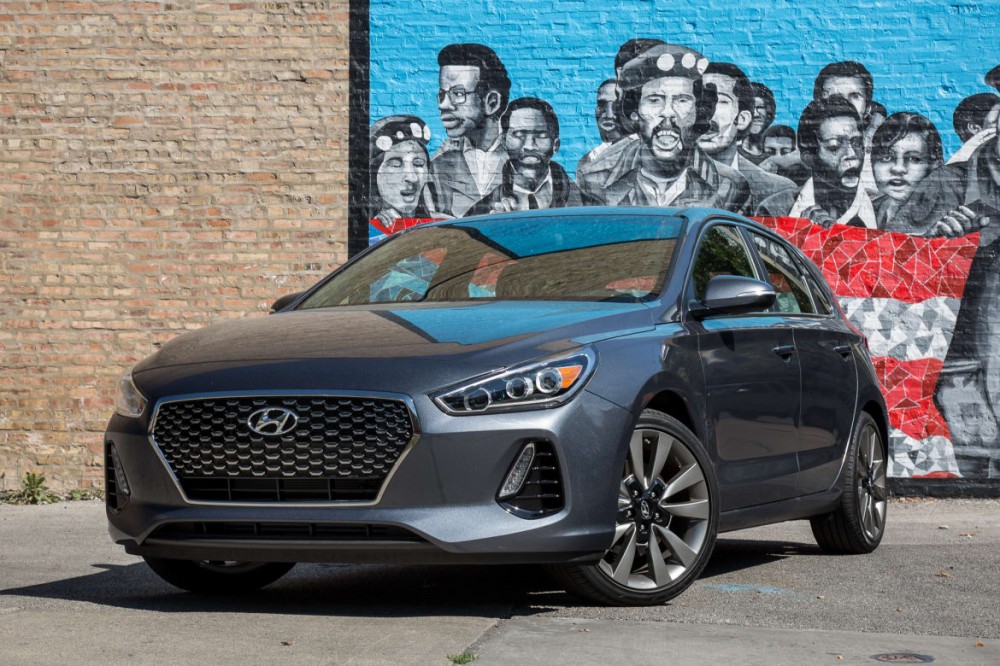
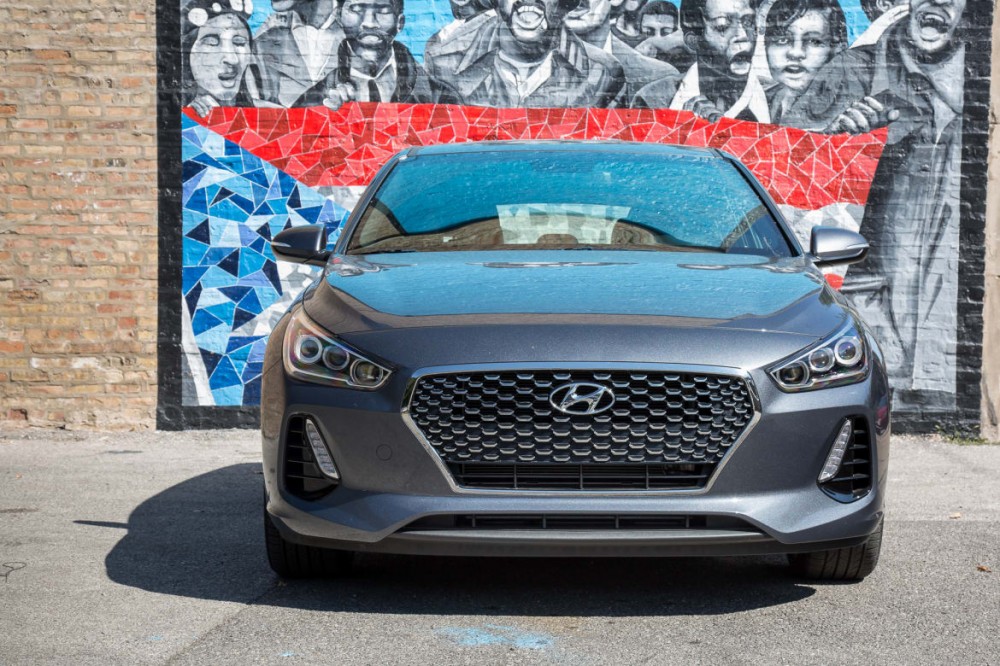
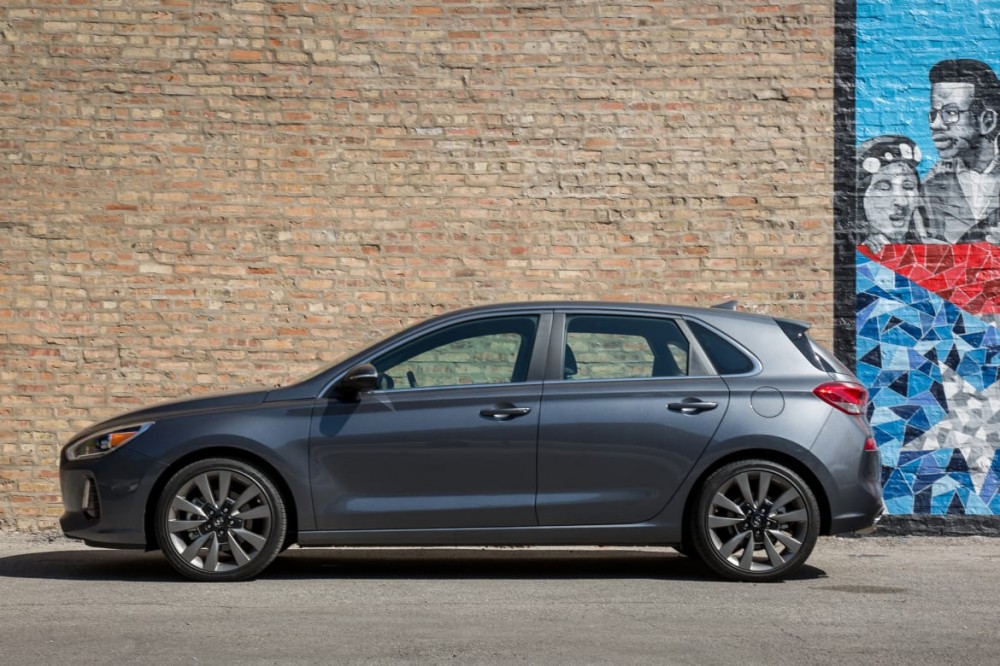
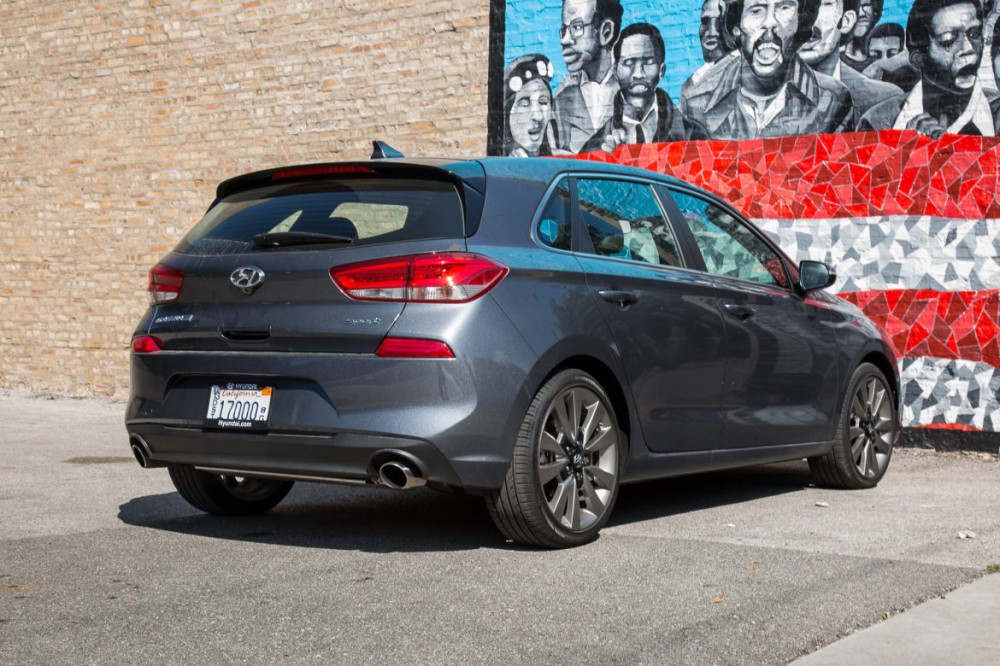
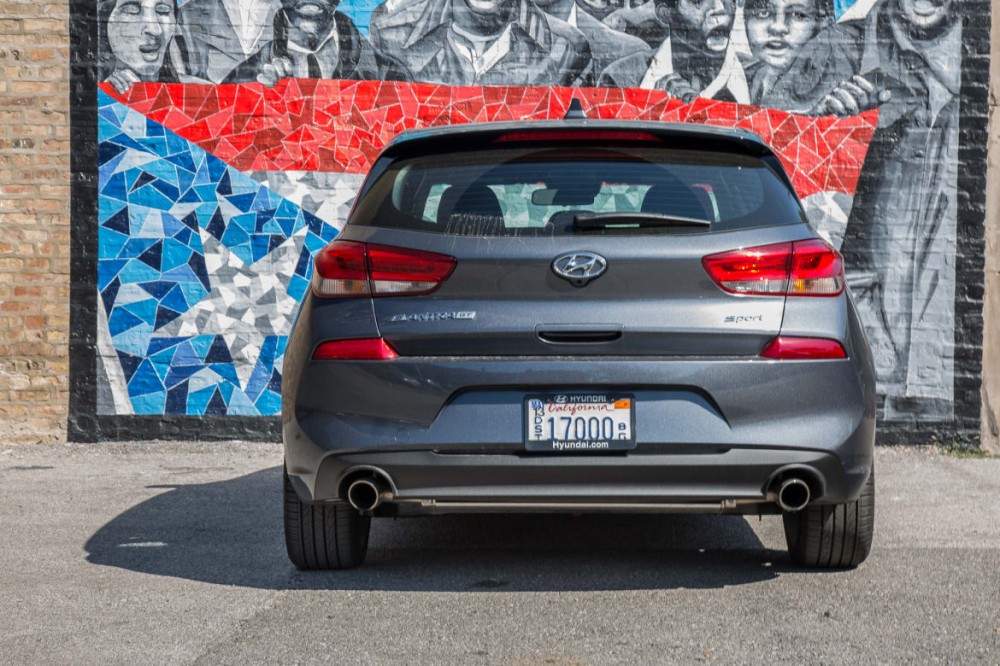
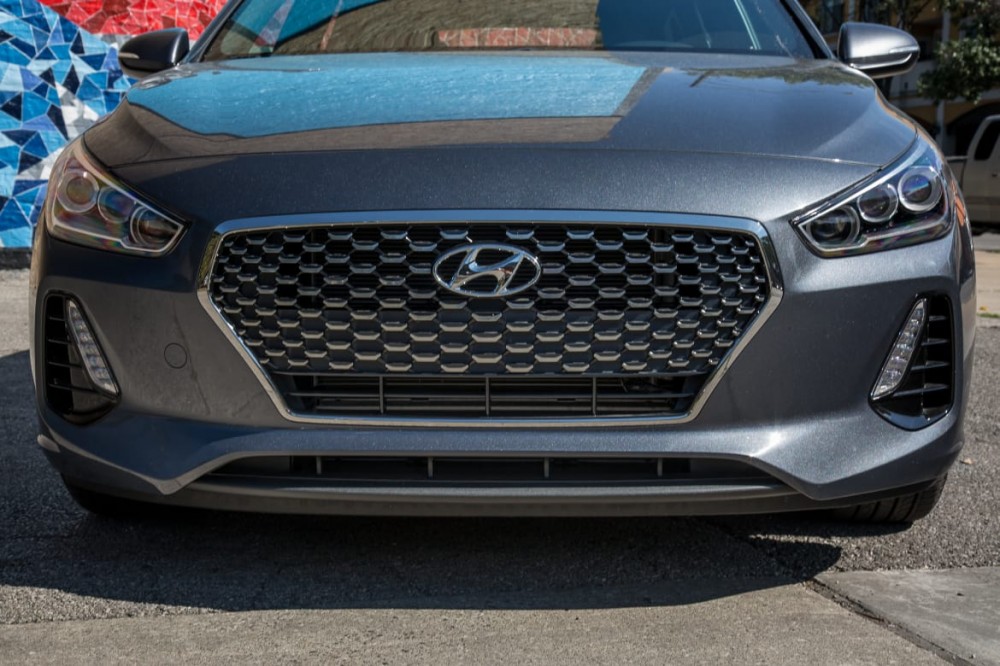
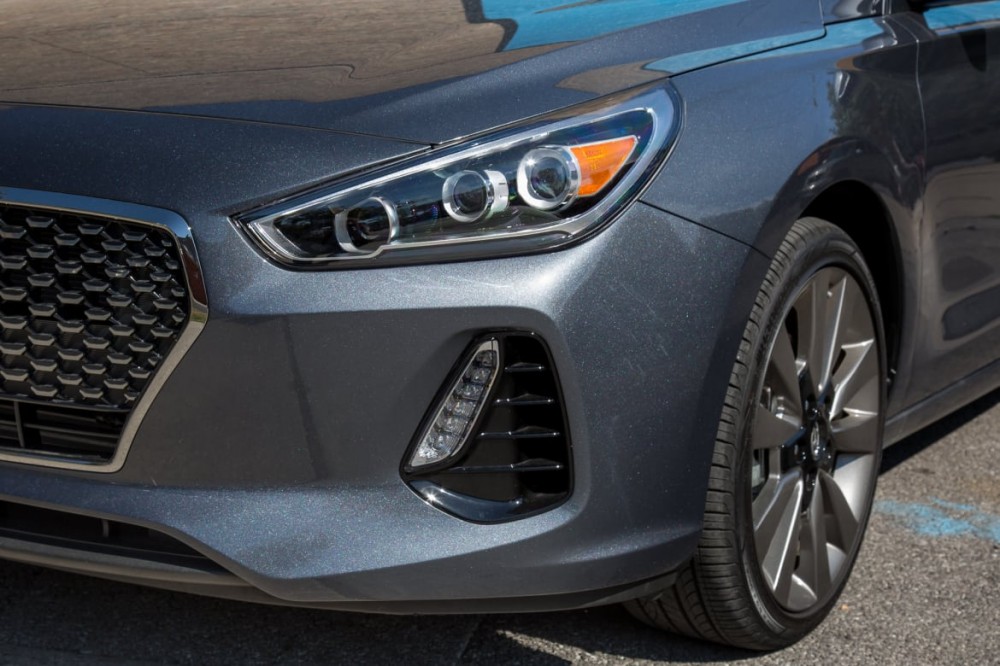
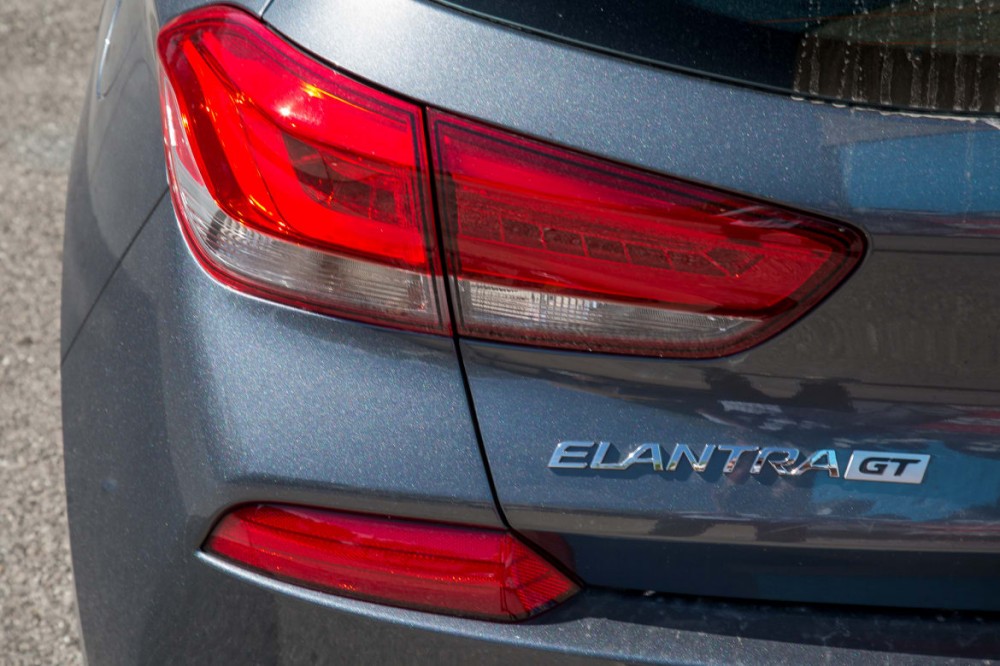
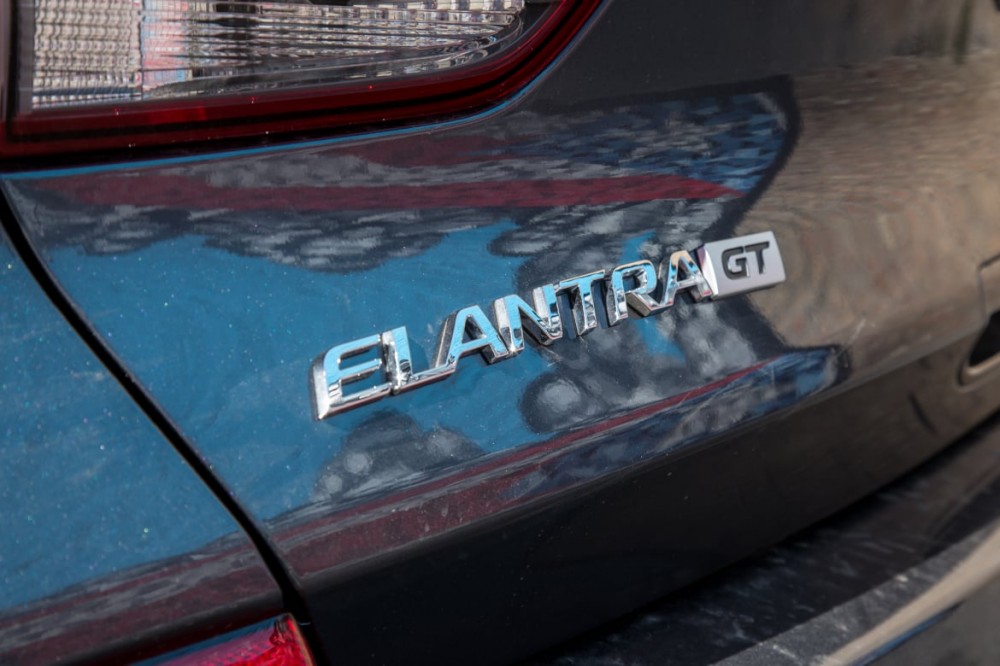
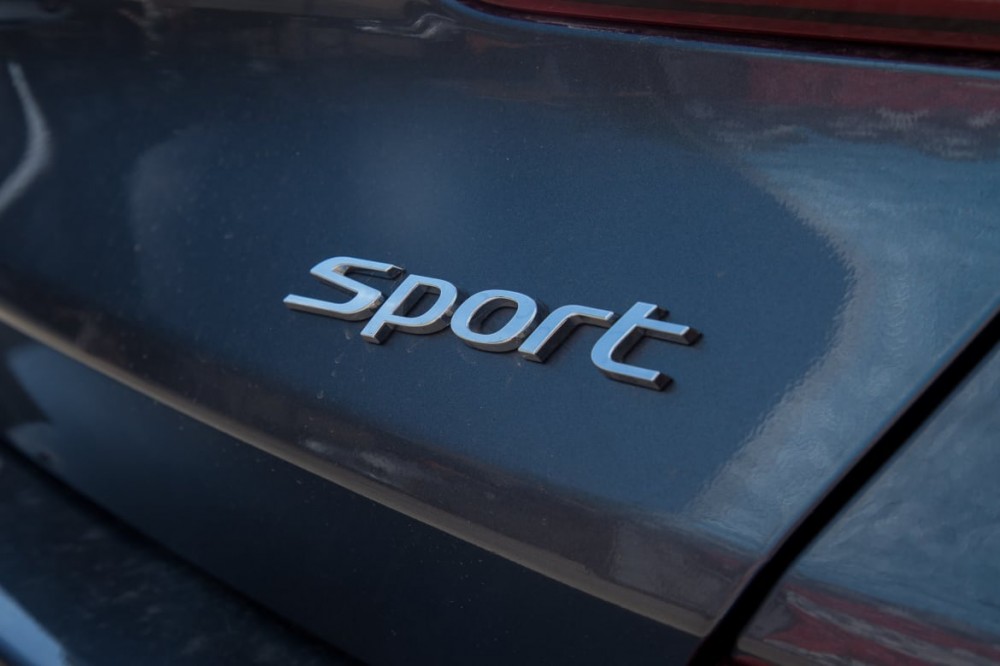
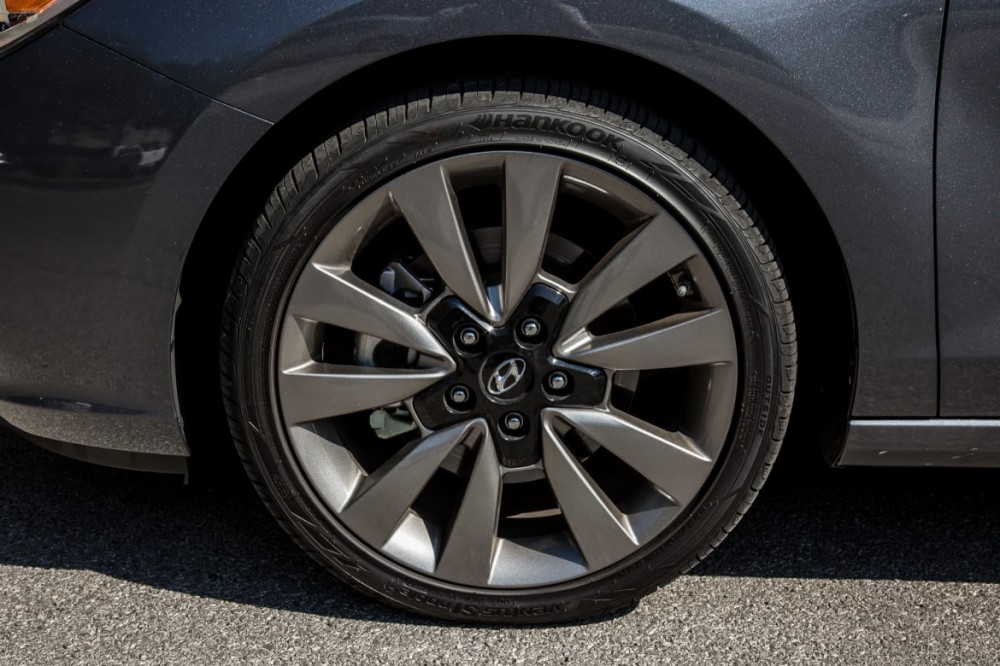
The horizontal theme extends to the dashboard, enhancing the impression of space inside. And it's not just an illusion; the interior is roomy for a car this size. The front seats are comfortable and sufficiently padded. The backseat is firmer but has reasonable legroom and headroom for two. If you opt for the dramatic panoramic moonroof, the interior seems even airier, but headroom for a tall (6-foot-2) backseat passenger is just adequate.
The GT Sport has a sportier feel inside, with black leather seats and red accent stitching, as well as red satin-metal-finish accent trim. It also adds a leather-wrapped steering wheel and shift knob. Heated seats are standard on the Sport; ventilated seats are available.
The materials and trim of the GT and GT Sport interiors are competitive with rivals such as the Civic and Cruze, but they have some hard-plastic touch points that make them fall short of the upscale feel of Volkswagen's Golf line — arguably the leader — and the Mazda3. Noise levels are generally good, but we did hear some road noise on rougher pavement, particularly with the GT Sport's bigger 18-inch wheels.
A love-it-or-hate-it feature, there's a standard 8-inch tablet-style touchscreen floating above the dash, flanked by buttons and knobs. Personally, I like the ergonomics; it's easy to reach and see without looking down, though I'd prefer a less shiny surface. I know screens floating above the dash — used by Mazda and Mercedes-Benz, among others — are controversial, but I suggest you try it before dismissing it.
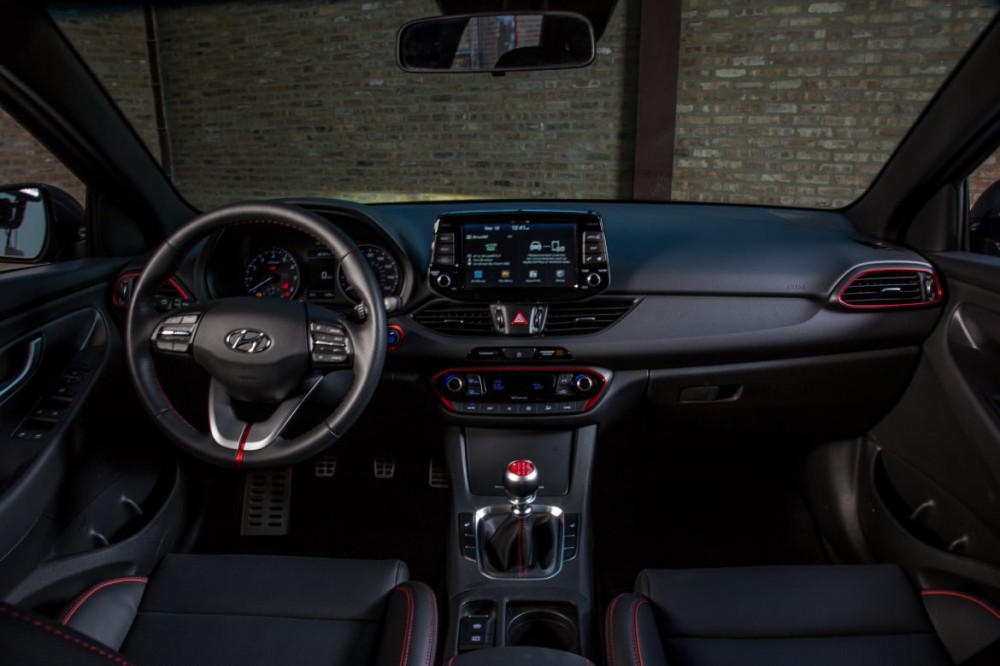
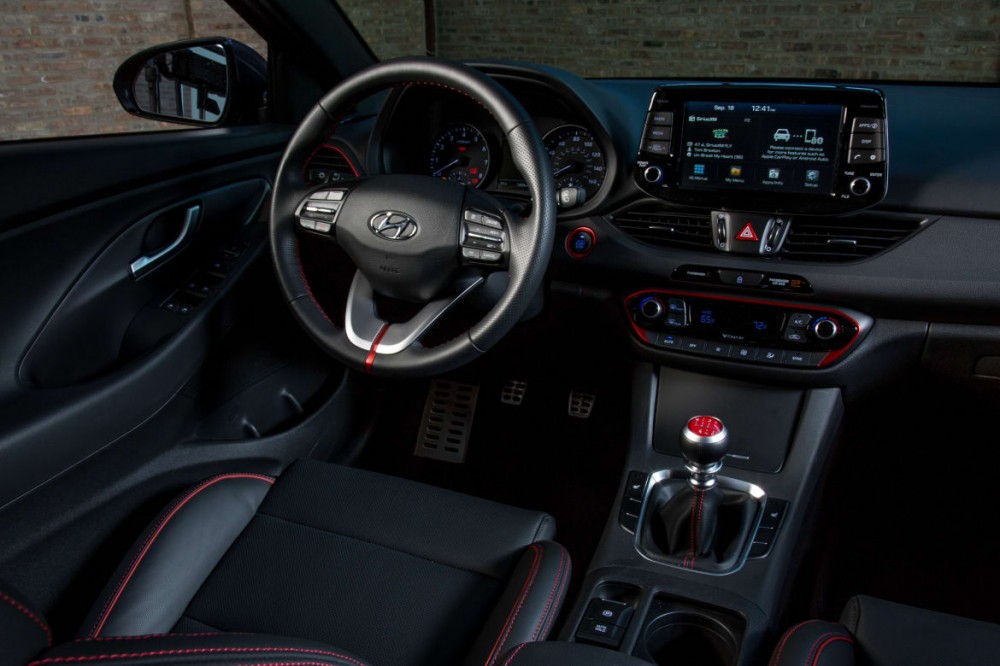
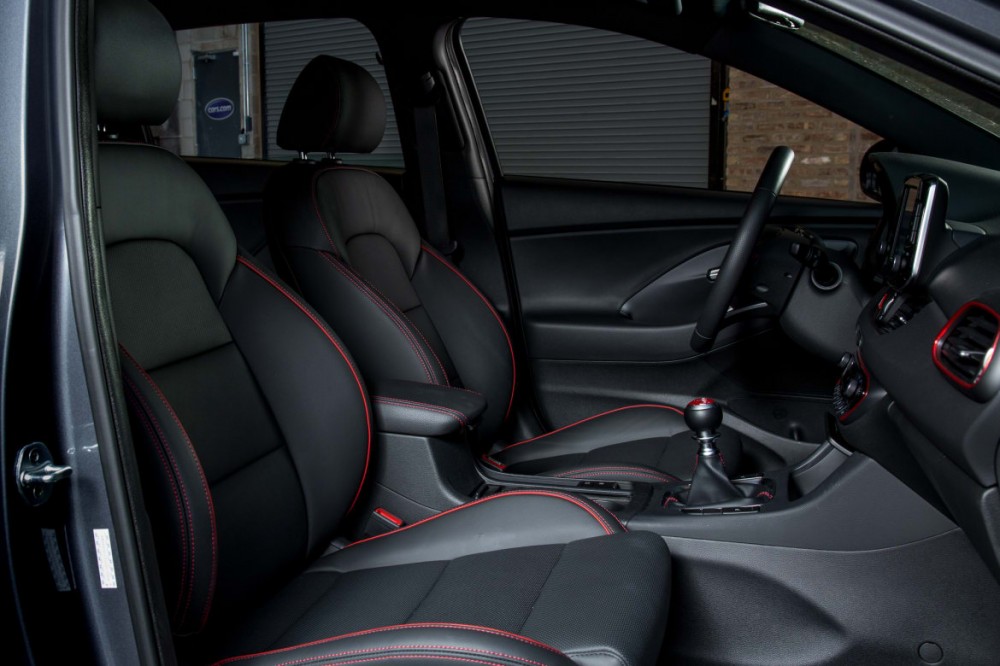
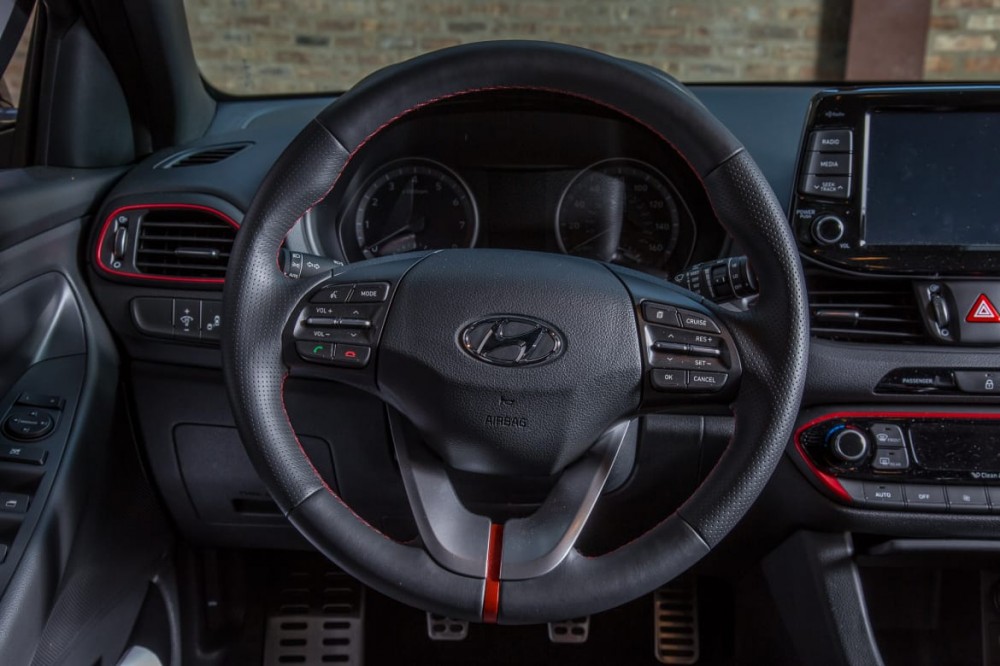
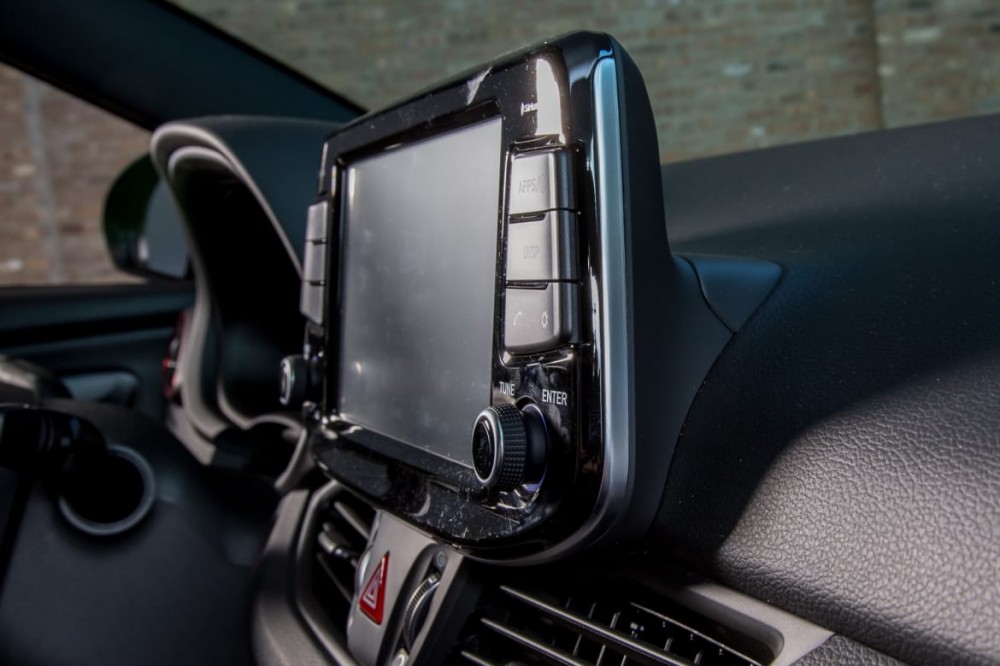
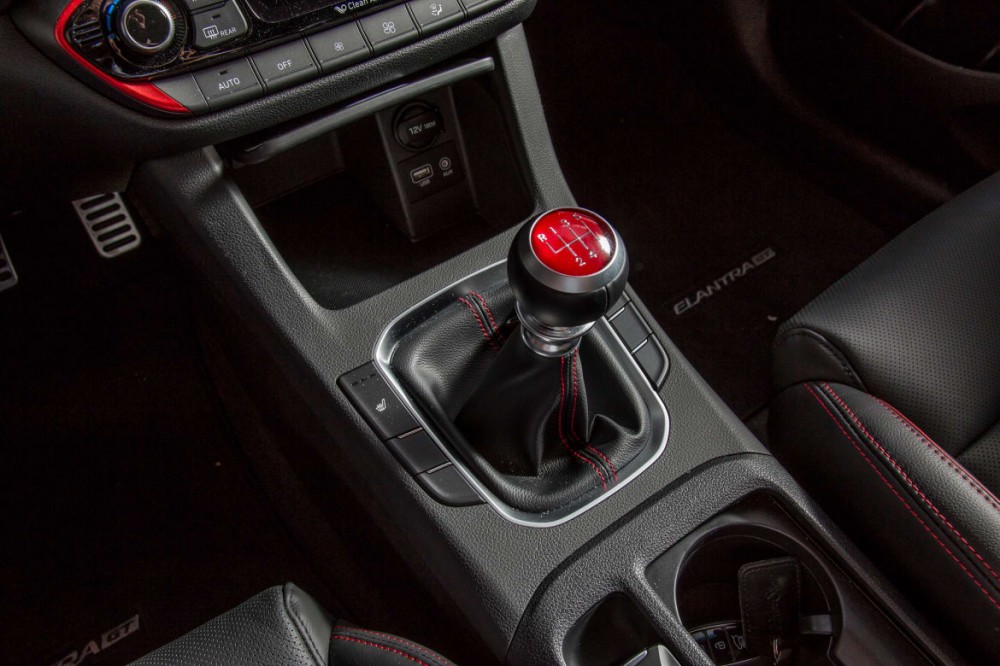
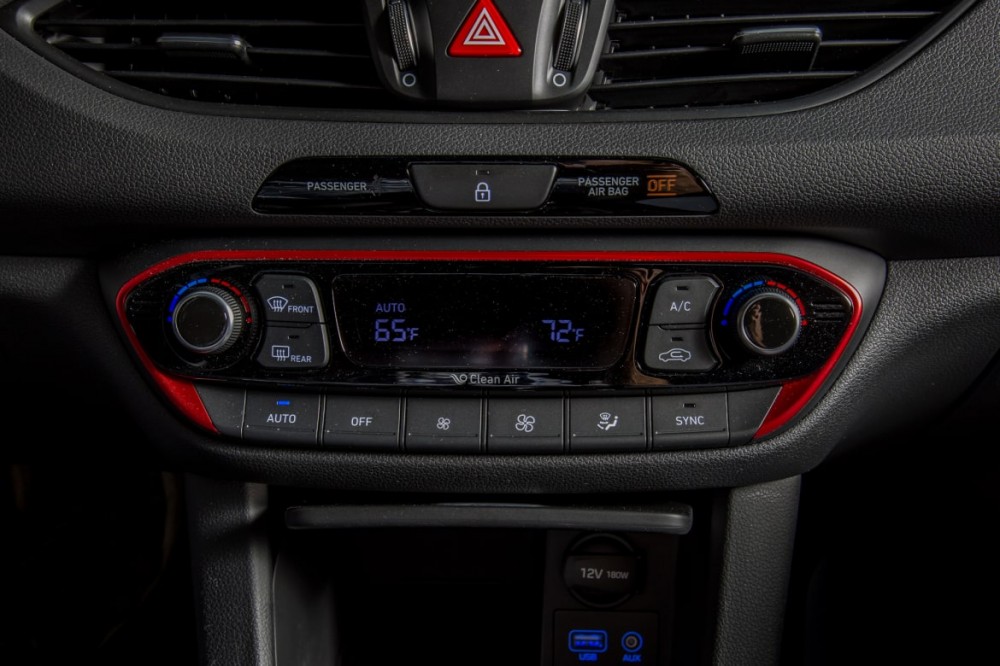
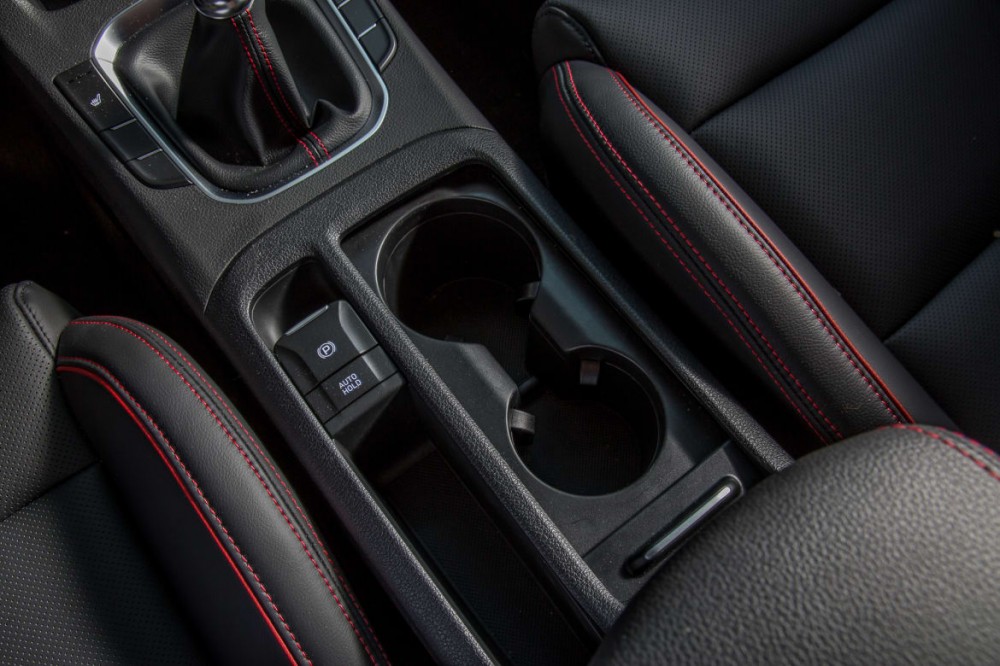
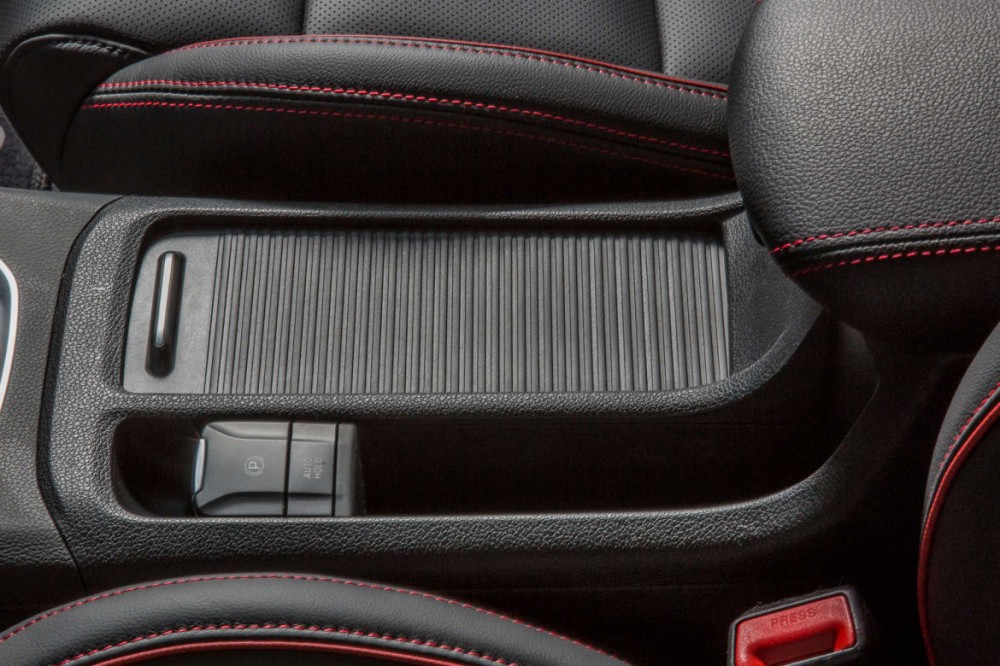

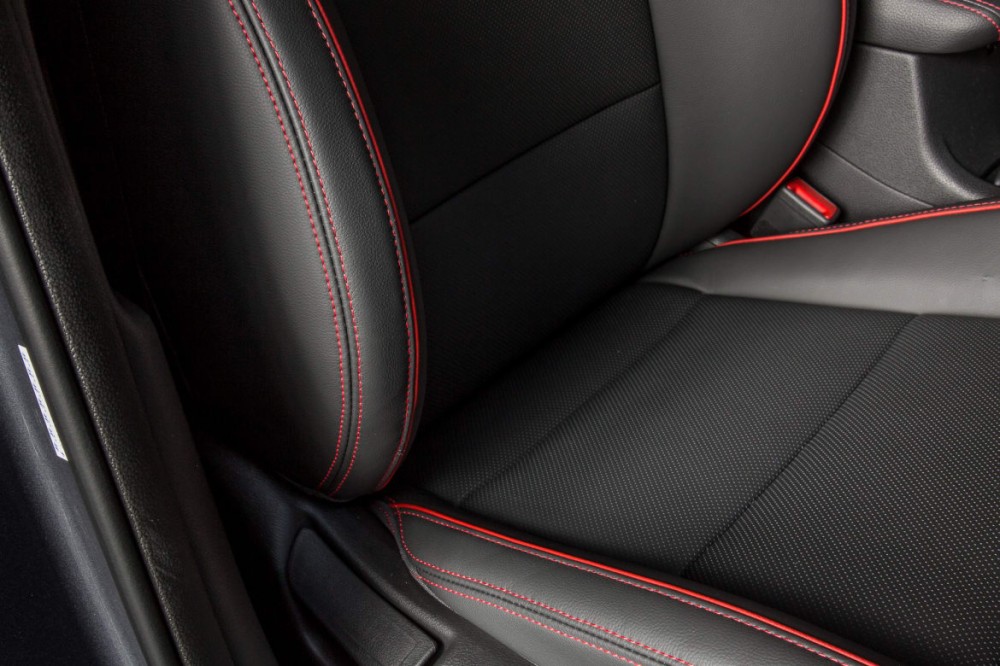
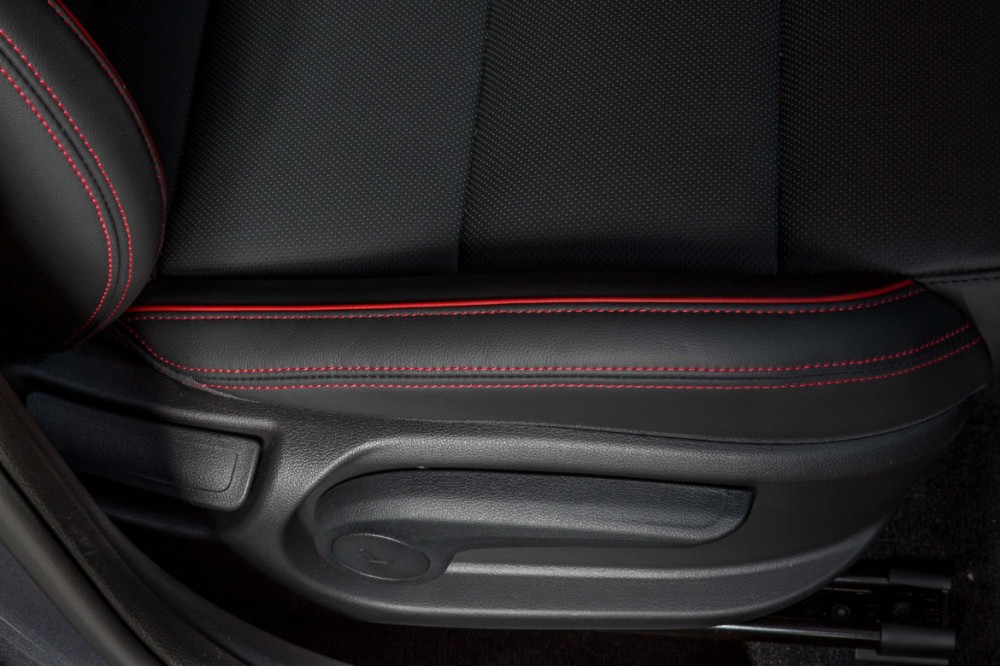
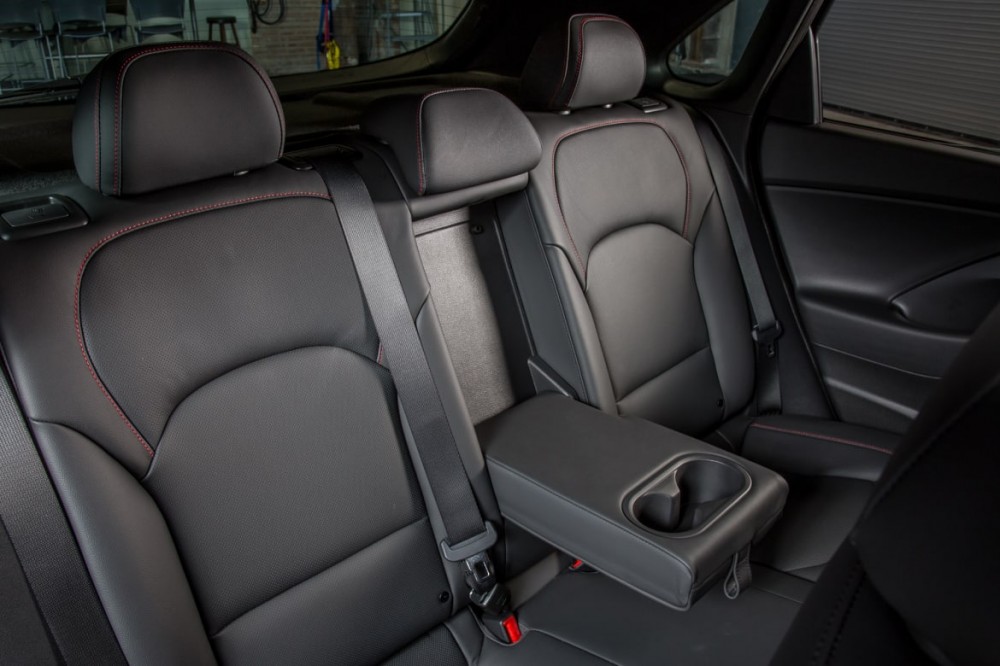
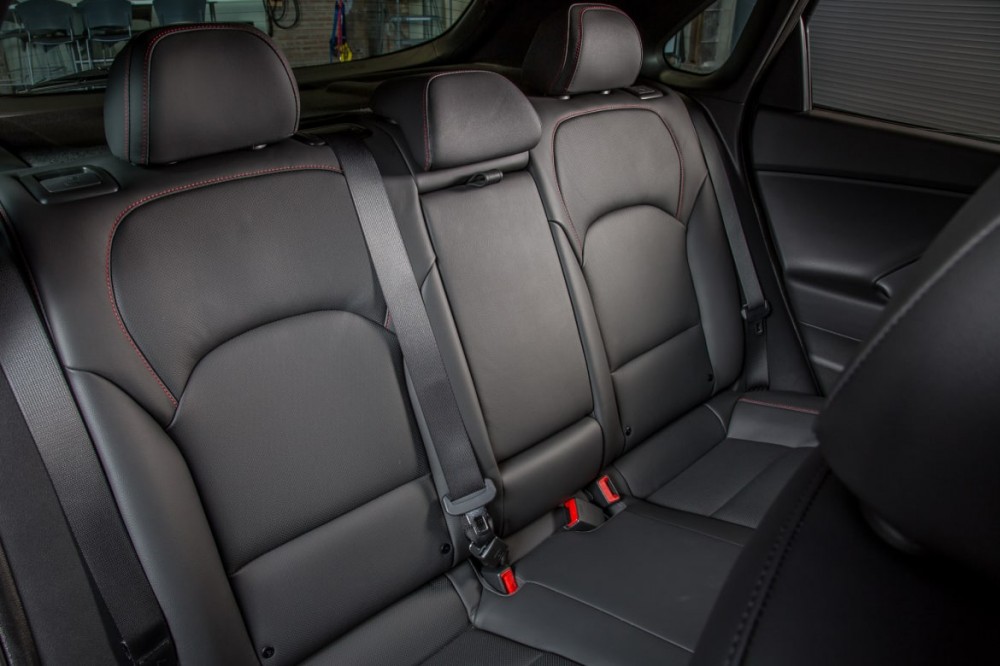
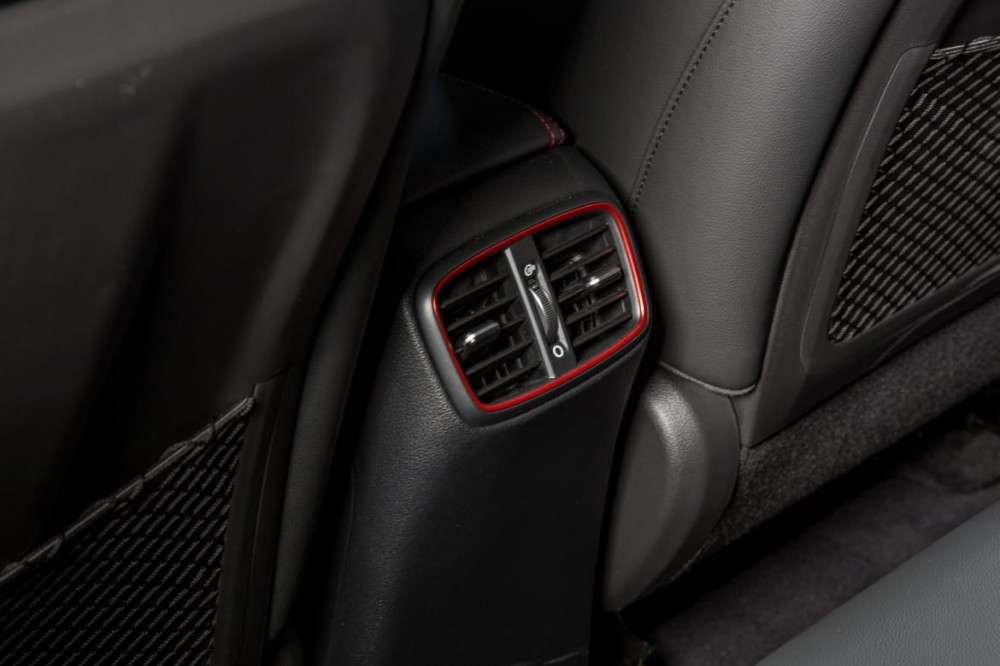
I know the screen floating above the dash is controversial, but I suggest you try it before you dismiss it.
It Hauls Mass
The almost wagonlike new GT shape offers about 8 percent more hauling space than the more rounded 2017. The cargo area is high, wide and deep, and it has a large hatch opening. We didn't have a mountain bike on hand, but Hyundai says it will swallow one without removing a wheel. The 60/40-split folding backseat creates a nearly level floor with the two-position rear cargo floor at its higher setting, but to get maximum volume, you'll have to put the rear floor into its lower position. Its maximum cargo room of 55.1 cubic feet with the backseat folded beats rivals such as the Golf (52.7 cubic feet), as well as the sleeker-styled Mazda3 (47.1) and Honda Civic hatchback (46.2). Space behind the backseat is a roller-bag-friendly configuration of nearly 25 cubic feet.
The GT's space gives lie to the notion that you need a small SUV to haul cargo: Honda's popular HR-V SUV offers just 24.3 cubic feet behind the rear seat and 58.8 cubic feet total. And while the Elantra GT doesn't offer all-wheel drive, it does everything a small SUV can do in most situations in most climates.
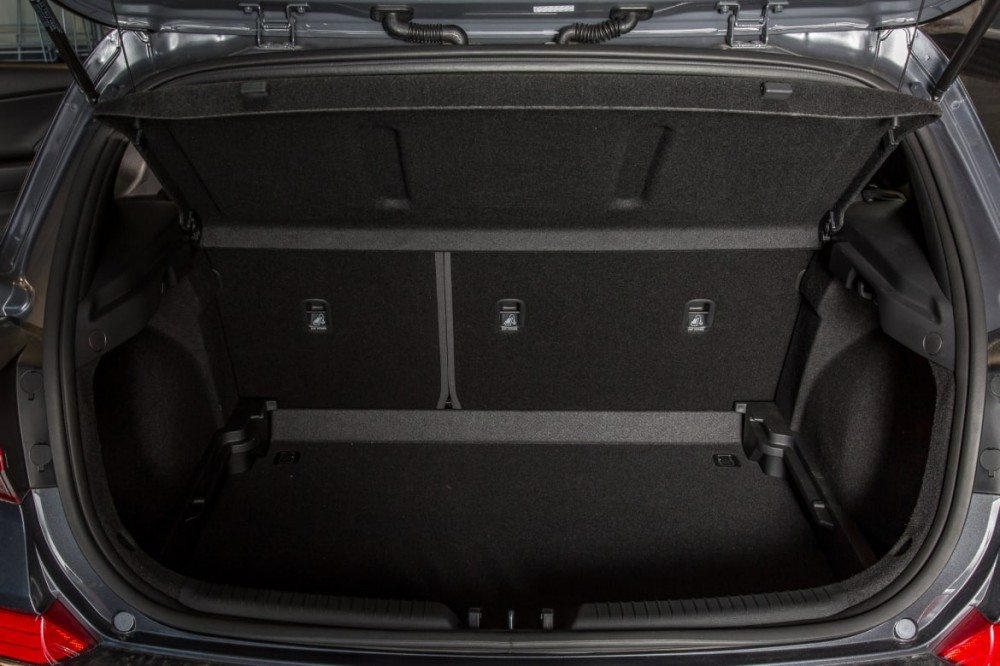
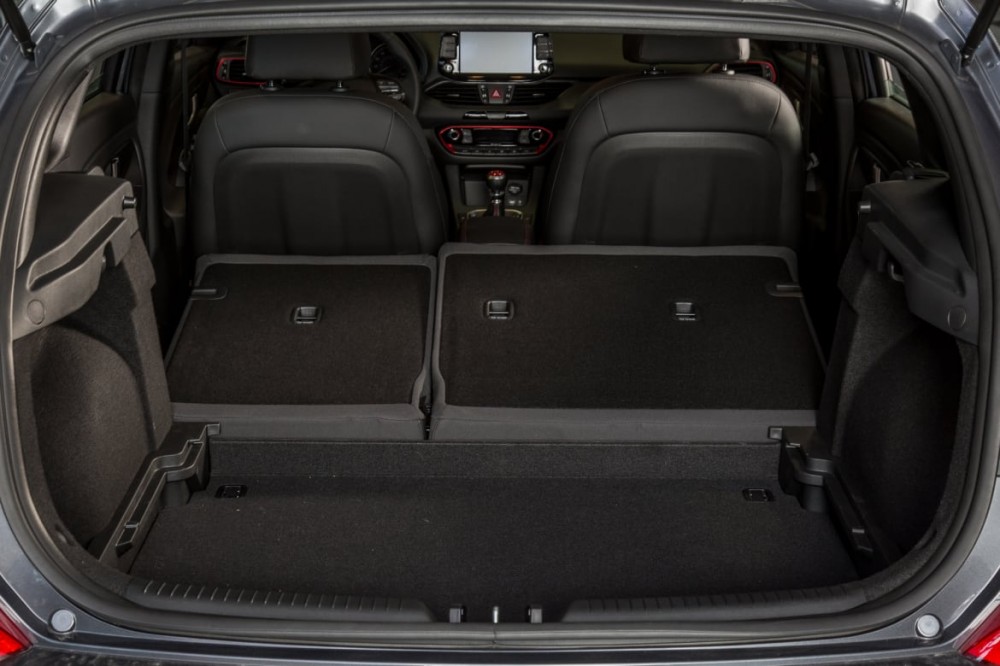
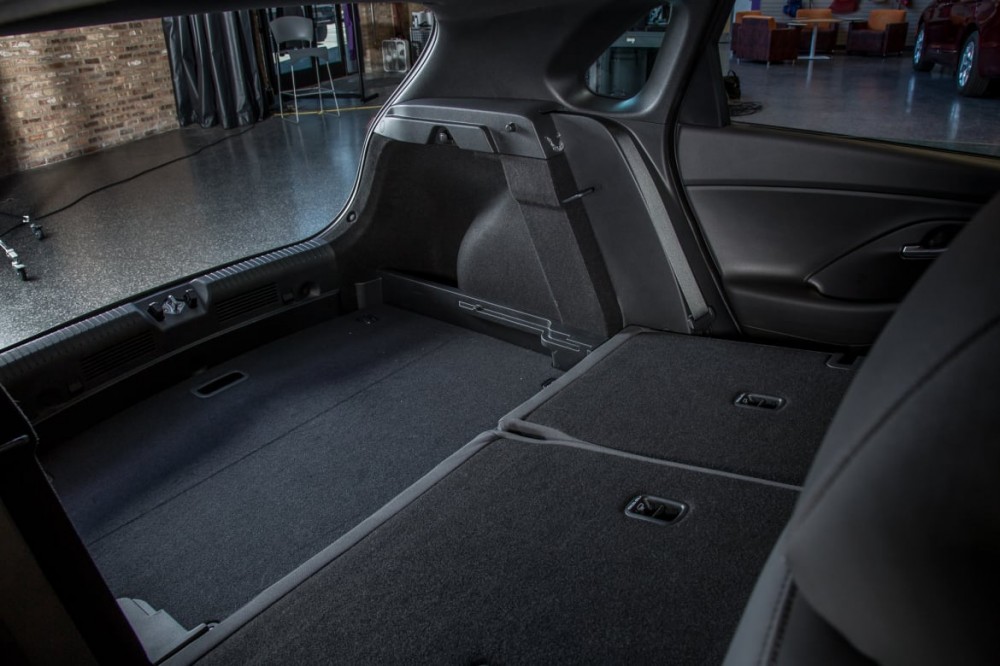
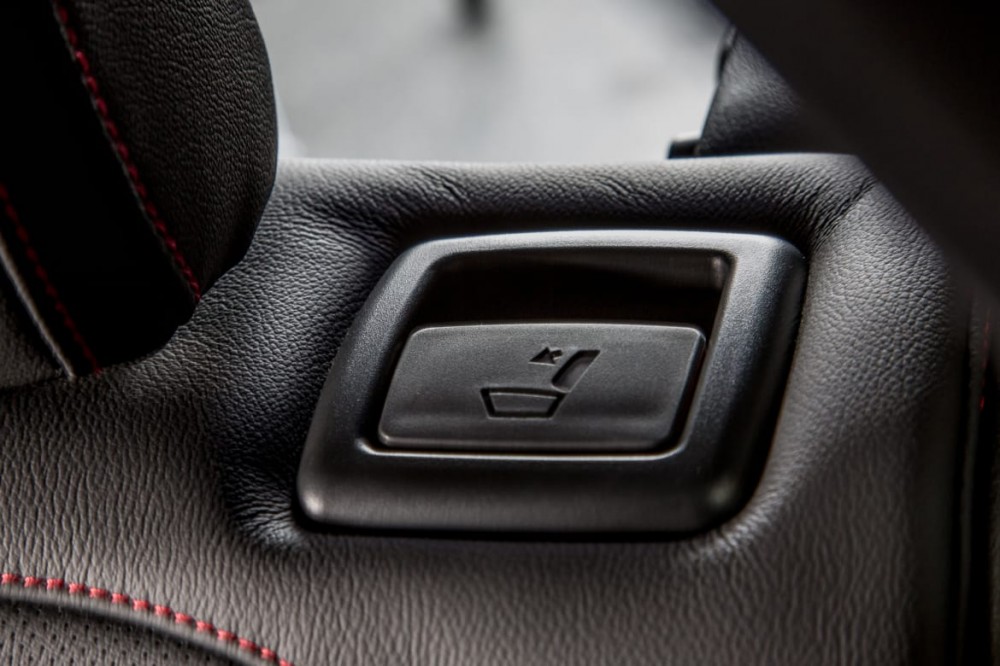
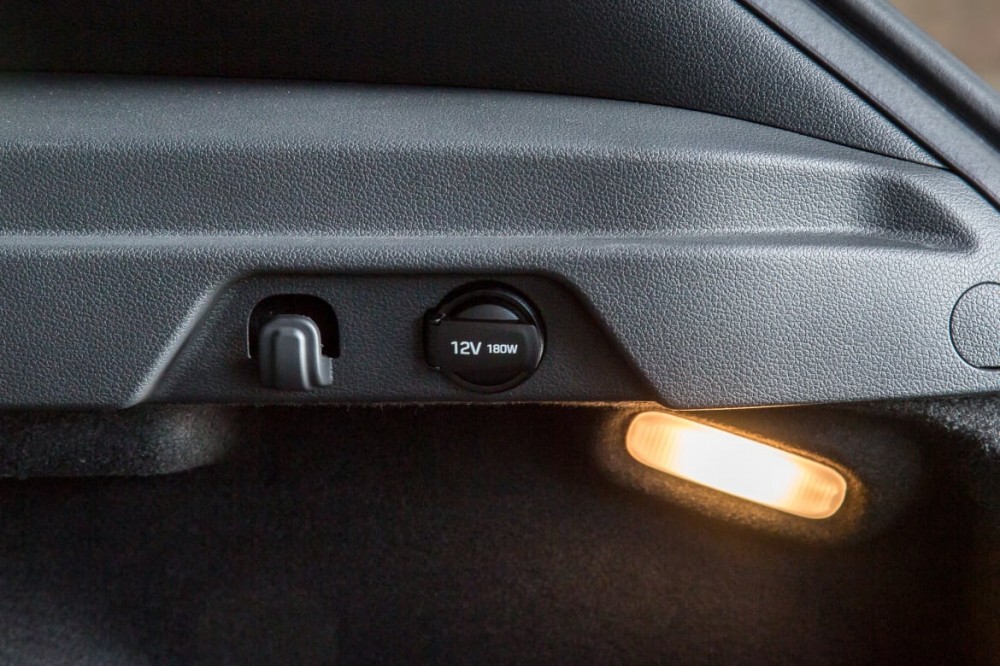
Two Flavors Under the Hood
The GT's base 2.0-liter four-cylinder engine makes 161 horsepower and 150 pounds-feet of torque, both down slightly from 2017 (173 hp, 154 pounds-feet). EPA-estimated gas mileage remains the same at 24/32/27 mpg city/highway/combined with the automatic transmission; those numbers drop 1 mpg across the board with the six-speed manual (compare them here). The base engine is adequate, even fun, in most situations and will suit many buyers, though you'll want to plan well ahead to pass a semi.
The better fit for the car's personality is the new GT Sport's 201-hp, turbocharged 1.6-liter four, an engine also used in Hyundai's Elantra Sport sedan and the underappreciated Veloster Turbo coupe. The Sport's power edge over the base model is magnified by the delivery of its 195 pounds-feet of torque, beginning at a low 1,500 rpm versus 4,700 rpm for the 2.0-liter. You can choose to stir the gears yourself with a six-speed manual transmission (Hyundai estimates a high 30 percent of buyers will do so), or you can opt for the crisp-shifting seven-speed dual-clutch automatic with steering-wheel paddles. The 1.6-liter with the automatic transmission is the top fuel-economy choice, EPA-rated at 26/32/28 mpg. The manual is the least efficient GT at 22/29/25 mpg.
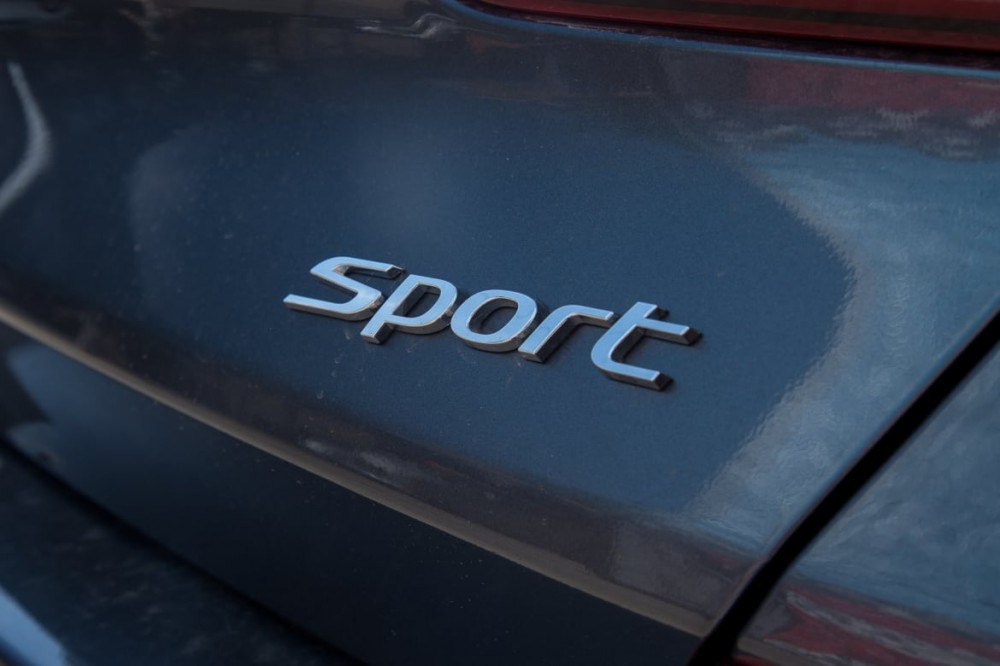
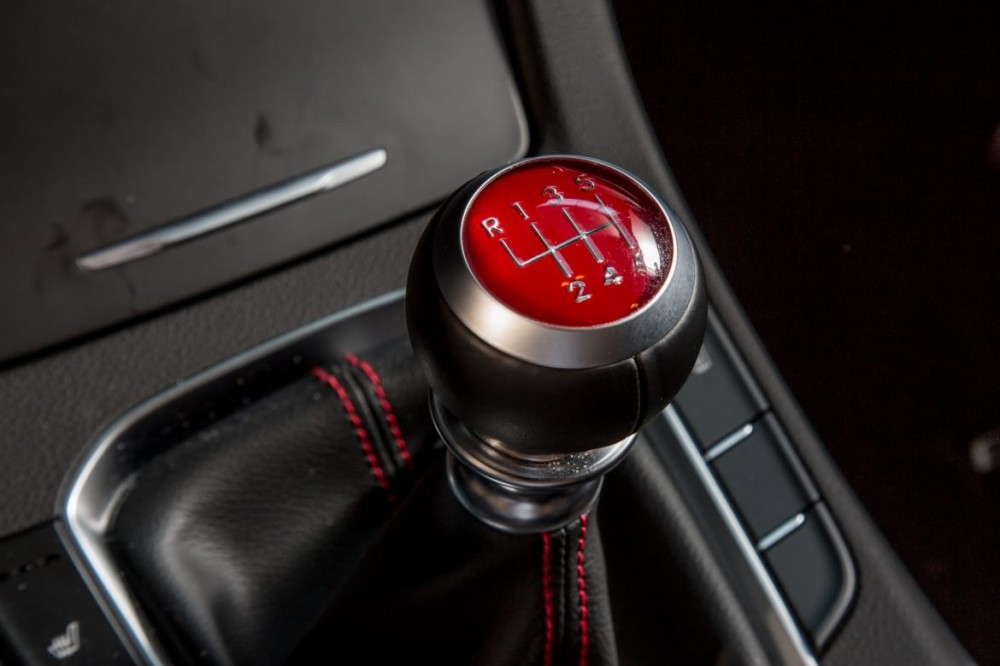
The turbo was a ball for carving canyon roads with the paddles to manage the gears. It was a lot more confidence-inspiring than the base engine while passing on the highway, with plenty of power and automatic downshifts that were quick and smooth. Its low-end punchiness, with only modest turbo lag, would make a more satisfying choice for daily commuting. The dual-clutch automatic, like most of its breed, will stumble occasionally at low speeds.
Other Cars.com editors drove a manual GT Sport in Chicago and reported it's fun to drive, but having only six gears and a small engine means it's not a rocket from a standing start. The engine doesn't rev very quickly, suggesting a heavy flywheel — the norm for such a small engine. The clutch pedal is very light. The shifter is decent but has longer throws than we'd prefer. Also, you can't add attractive tech and safety option packages to the manual-equipped GT or GT Sport; they're available only on their respective automatic versions.
You won't mistake the GT Sport for a true hot hatch like the Volkswagen Golf GTI or Ford Focus ST performance models, but it's a lot warmer than the 2017 — enough to spice up your commute. A legitimate hot-hatch version, the performance i30 N, is going on sale in Europe, but there's no word of it coming to the U.S.
Excellent Handling, With a Few Bumps
The Elantra GT Sport gets substantial chassis upgrades over the base GT, with a sport-tuned multilink rear suspension versus the GT's torsion beam, plus bigger brakes and 18-inch alloy wheels versus the 17s on the GT. But even the standard GT setup was surprisingly nimble on twisting roads, and the ride was pleasantly firm for a non-sporty trim. The GT Sport, though, can be pushed harder and faster with confidence, and the ride was just a hair busier in the base GT.
Oddly, the GT Sport didn't feel quite as taut or confident when pushed as an Elantra Sport sedan I recently drove. And the steering, while OK, had more boost and less feel than the surprisingly good steering in Hyundai's refreshed 2018 Sonata family sedan I'd driven a day earlier. Overall, though, the GT is a whole lot of fun — more than you'll ever find in an SUV.
User-Friendly Tech
Media and safety technology once limited to high-end cars is standard in the Elantra GT and GT Sport. An 8-inch touchscreen system, with or without in-car navigation, is standard, along with Hyundai's latest-generation infotainment system and Apple CarPlay and Android Auto smartphone integration; wireless phone charging is optional. The system is intuitive, quick to respond and has crisp graphics. A useful detail: You can mix and match AM, FM and satellite station presets on one screen. The available Infinity premium audio system includes Clari-Fi technology to boost the sound of compressed music files. The combination delivered very good sound from my phone library.
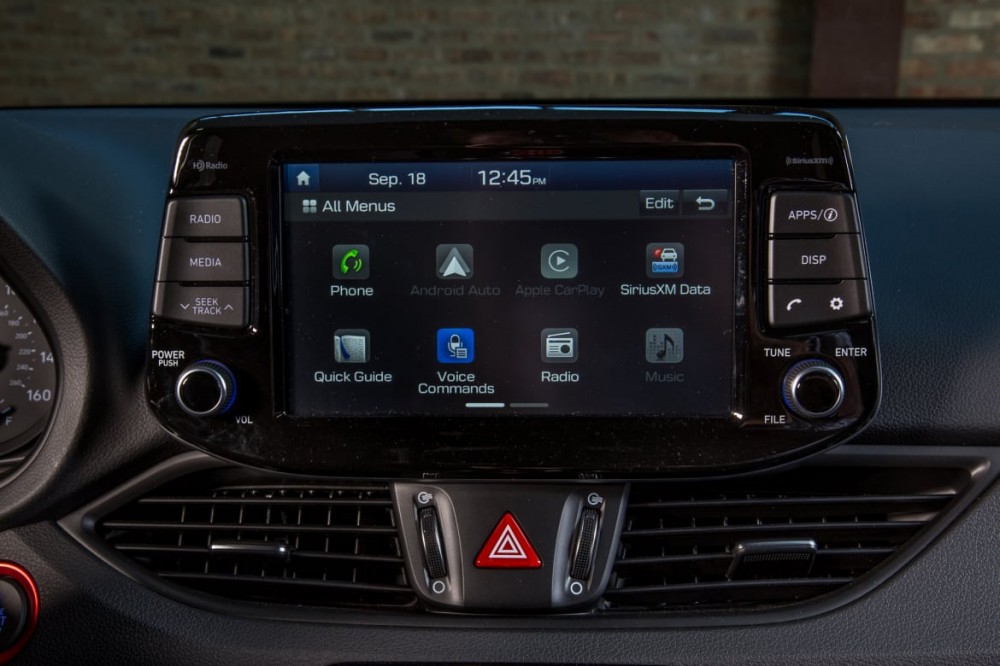
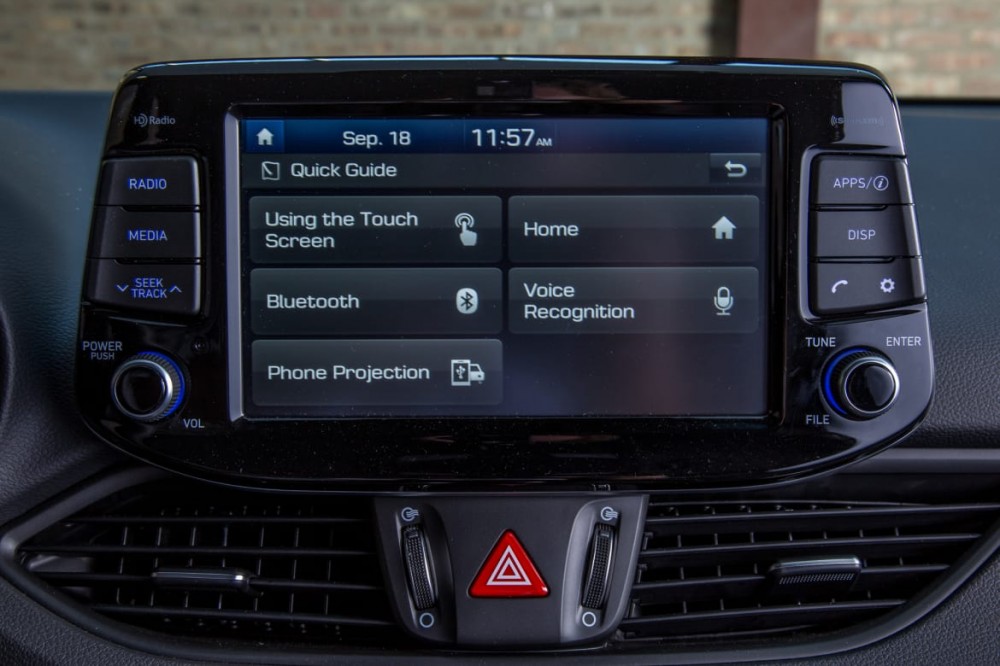
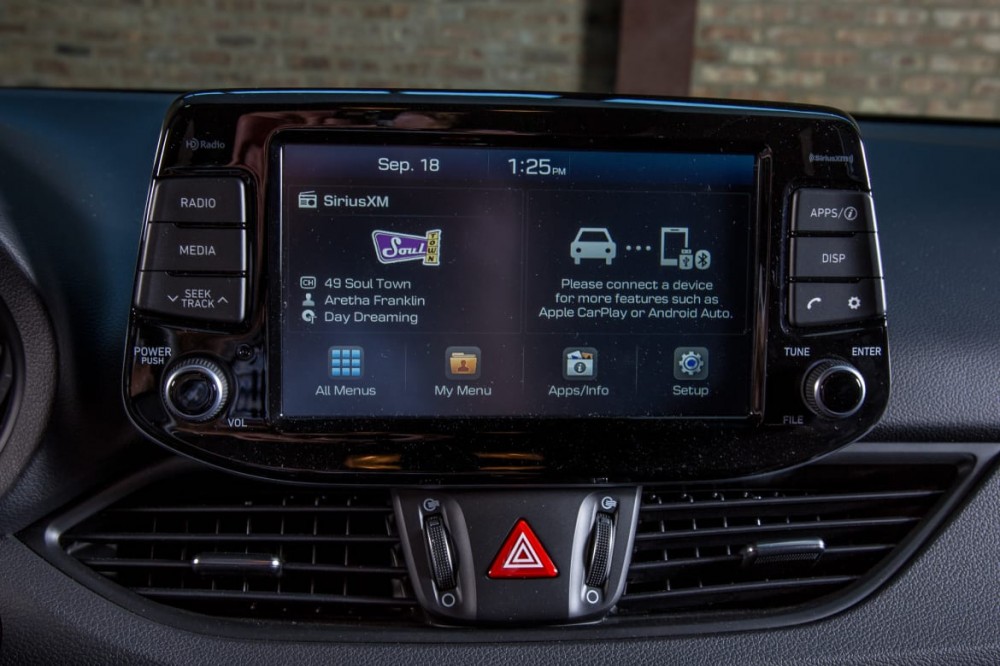
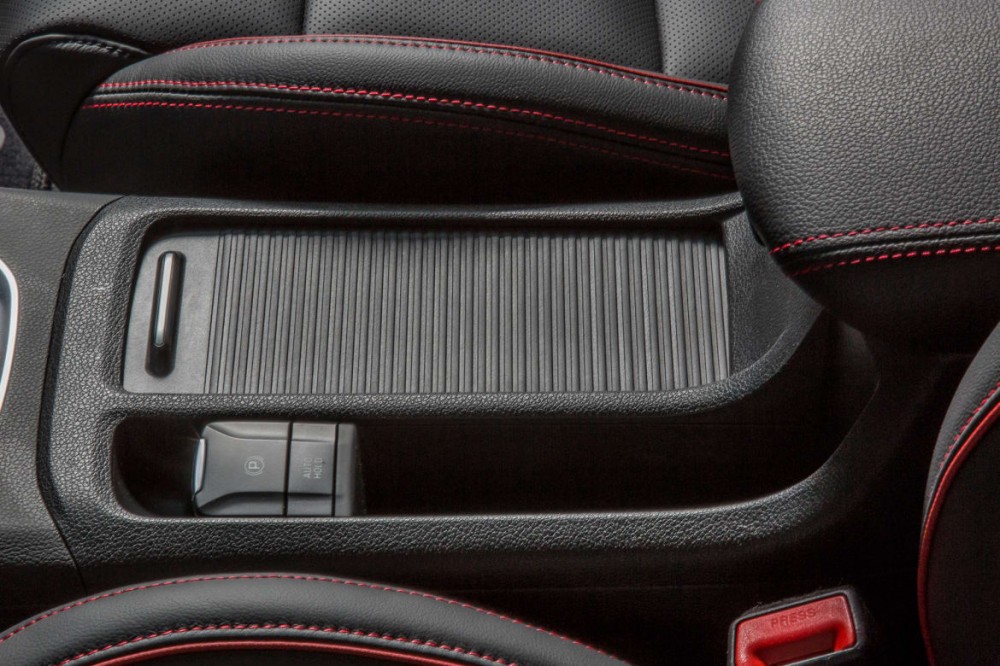
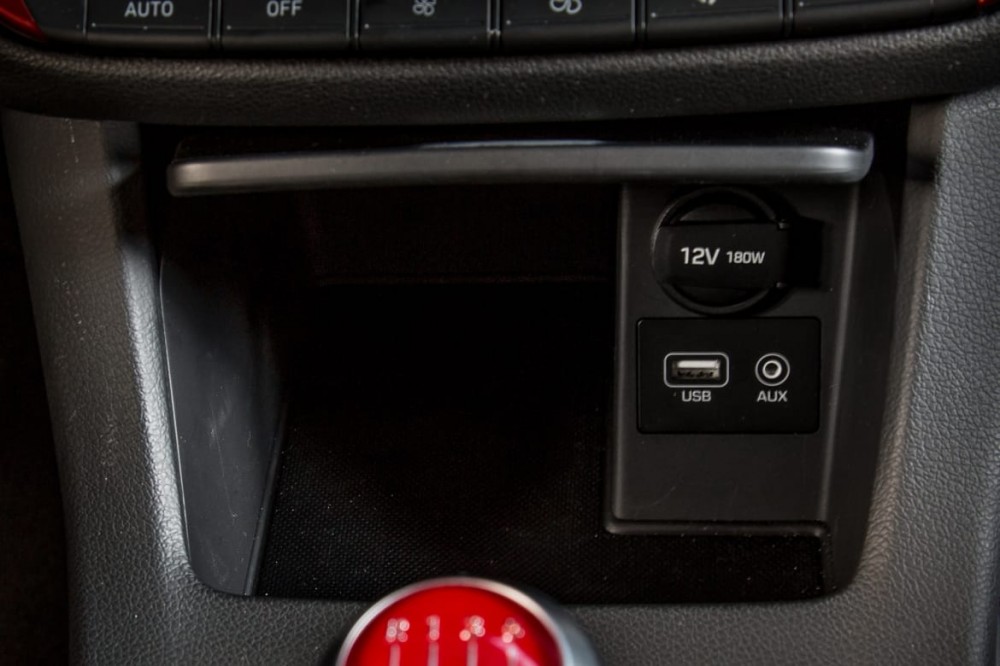
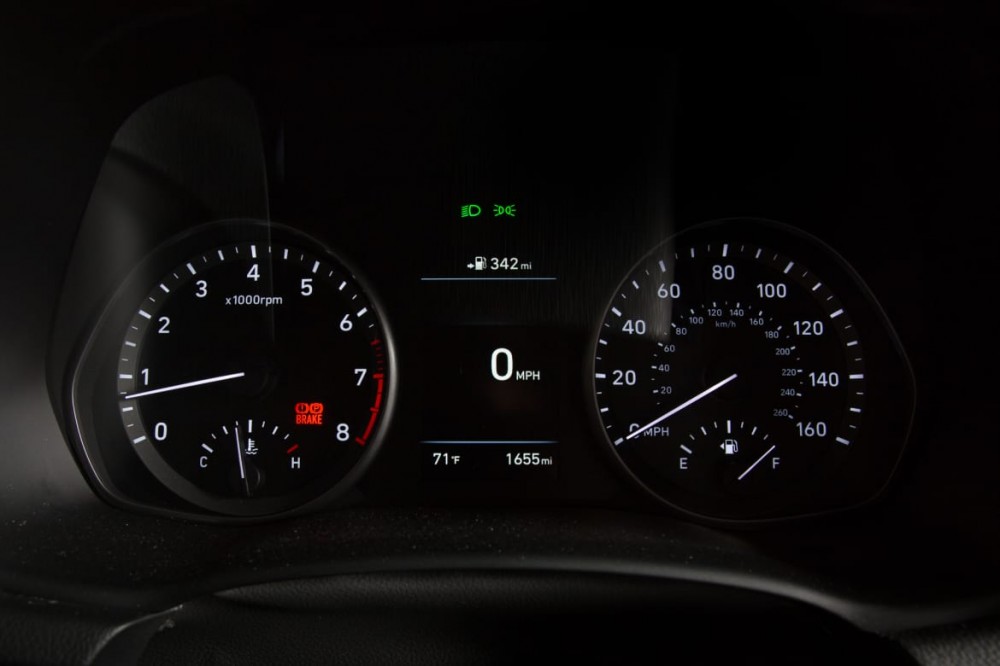
All models have updated Hyundai Blue Link connectivity for remote starting, locking and climate control (including the rear defroster and side mirror heaters) via phone or smart speakers, such as an Amazon Echo. For 2018, Hyundai is including three years of free Blue Link remote services as well as free map updates for models with in-car navigation.
High-Tech Safety, at a Price
The 2018 Elantra GT had not been crash-tested as of publication, but it does offer — at a price — an array of safety tech once more common in high-end cars, rivaling the Honda Civic's available features among the hatchback competition. Available systems include adaptive cruise control with stop-start capability; a front collision system with automatic emergency braking and pedestrian detection that operates up to 37 mph; lane departure warning and prevention; high-beam assist; blind spot warning; and rear cross-traffic alert.
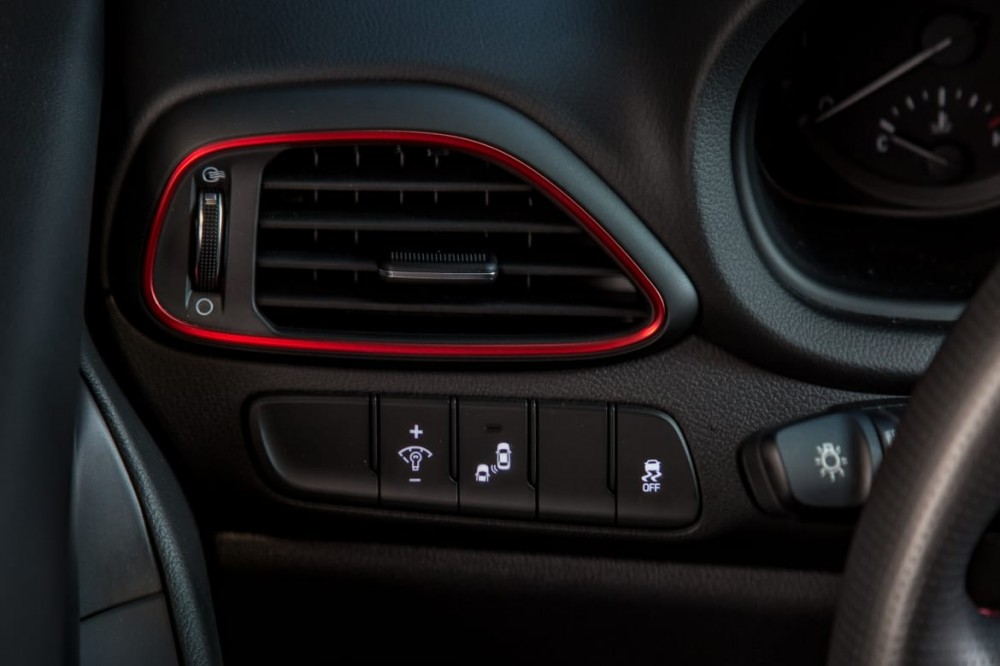
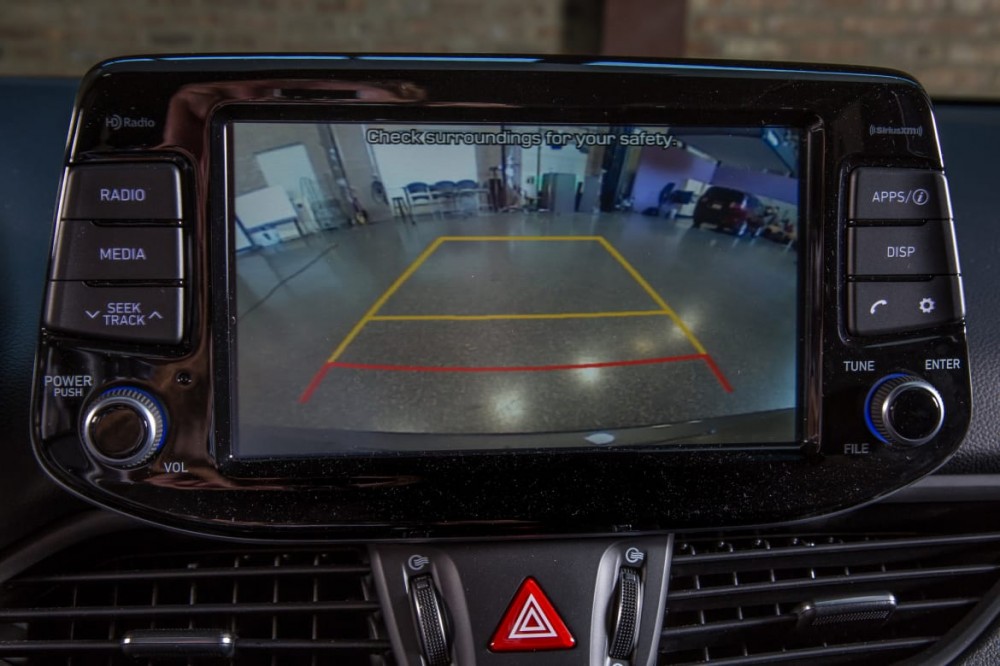
A novel addition is a driver attention alert that detects weaving, lane encroachment, sudden movements and loose grip on the steering wheel. I tried these intentionally and found that they worked, and I didn't suffer any false alarms in normal driving.
You'll get the full safety buffet, however, only if you pony up for the GT Sport with the automatic transmission and a $3,850 Sport Tech Package, which also includes a bundle of other features, including ventilated seats up front. The GT Sport does at least get standard blind spot warning and rear cross-traffic alert; those are optional on the automatic GT.
Value?
Yes.
The base GT with a manual transmission starts at $20,235 including destination charge. That's an increase of $550 from the starting price for the 2017. The automatic transmission adds $1,000. The base tops out at $27,335 with Tech ($1,800) and Style ($4,300) packages that ladle on amenities — an array that would make an entry premium car blush — plus a blind spot monitor and rear cross-traffic alert. The new GT Sport turbo version starts at $24,135; add $1,100 for the dual-clutch automatic. It runs up to $29,085 with the Sport Tech Package's array of pampering features, plus a full suite of safety features.
Either model, with or without the option packages, is more than competitive with — and in most cases priced a bit lower than — comparable versions of rival hatchbacks. Both GTs include free remote services and updates, plus Hyundai's generous five-year/60,000-mile transferable bumper-to-bumper warranty and 10-year/100,000-mile powertrain coverage.
The standard GT can hold its own in driving and comfort with its rivals. The GT Sport won't be mistaken for the more capable Golf GTI, nor does it attempt to be one. Think of it more as a GTI Light. But it can still put a smile into your daily drive while saving you perhaps a couple of thousand dollars for similar features, if not driving dynamics.
The GT and GT Sport, like other hatchbacks, also include the inherent value of SUV-like capacity to haul your stuff, but with a cheaper price, better gas mileage and more driving fun than small SUVs. Whether U.S. buyers are ready to bite on that, however, remains to be seen.








